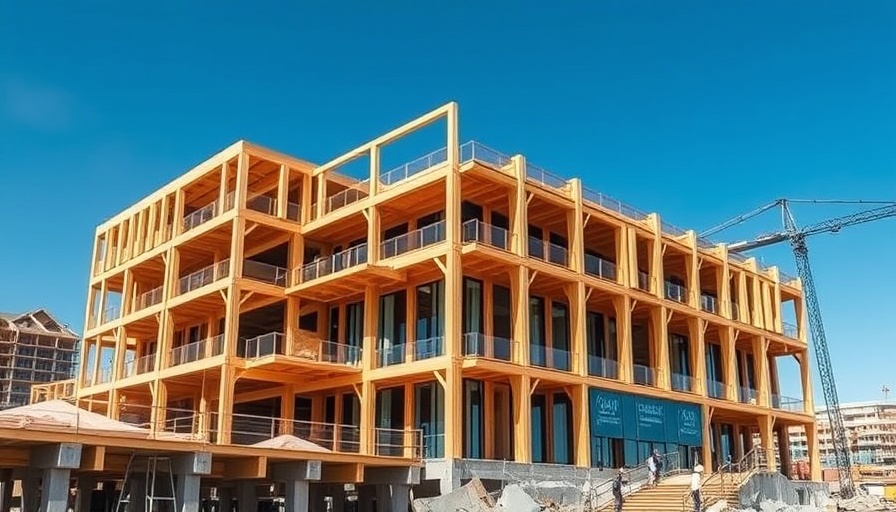
Walmart's Bold Move: Embracing Mass Timber for Sustainability
Walmart has recently made headlines by integrating mass timber into the construction of its new corporate headquarters in Bentonville, Arkansas. This decision marks a significant shift towards sustainability in commercial building practices, aligning with growing trends in eco-conscious construction. By utilizing materials like cross-laminated timber (CLT) and glued laminated timber (glulam), Walmart is not only enhancing the aesthetic appeal of its corporate campus but is also making strides in reducing its carbon footprint.
Construction Details and Eco-Friendly Benefits
Mercer Mass Timber played a key role in this project, tasked with erecting four hybrid mass timber buildings, each standing four stories tall, as well as additional office spaces framed entirely in mass timber. The total area for Zone 1 is a staggering 897,500 square feet, while Zone 3 contributes 332,615 square feet through its five-story building. The innovative use of timber not only facilitates an inviting natural environment for employees but also supports the larger movement toward sustainable development in the construction industry.
Economic Impact: Job Creation and Local Benefits
The construction of Walmart's headquarters is creating local jobs, with Mercer Mass Timber employing 58 local workers at its Conway, Arkansas branch. Using 21,000 cubic meters of timber sourced locally supports the economy and emphasizes the importance of local labor in large-scale projects. This approach benefits workers while fostering a sense of community that is essential for the long-term success of such large companies.
Future Trends: The Rise of Sustainable Construction
The trend of using mass timber aligns seamlessly with growing environmental regulations and consumer preferences for sustainability. As companies evaluate their environmental impact and seek ways to reduce emissions, the use of sustainable materials like mass timber could become a standard practice in corporate architecture. Such changes are about more than just compliance; they symbolize a shift in corporate culture towards greater responsibility.
Potential Challenges and Counterarguments
While the benefits of mass timber are appealing, there are potential challenges to consider. Critics of mass timber construction often cite concerns over fire safety and structural integrity compared to traditional materials. Fire resistance is a significant consideration, especially in larger buildings. However, advancements in mass timber technology are addressing these concerns, with treatments and design innovations aimed at enhancing safety.
Conclusion: The Importance of Sustainable Choices in Building
Walmart’s implementation of mass timber is a compelling example of how the corporate world is beginning to embrace sustainability as a core business practice. For homeowners aiming to follow similar sustainable principles in their own projects, this development serves as an inspiration. Building with eco-friendly materials not only enhances the beauty of spaces but also contributes to long-term environmental health. As we move forward, sections of the construction industry must continue to innovate for a greener future.
For more information on how sustainable materials can enhance your building projects or to find expert contractors who understand eco-friendly practices, visit ProHomeGuides today. Together, we can build a sustainable future!
 Add Row
Add Row  Add
Add 




Write A Comment